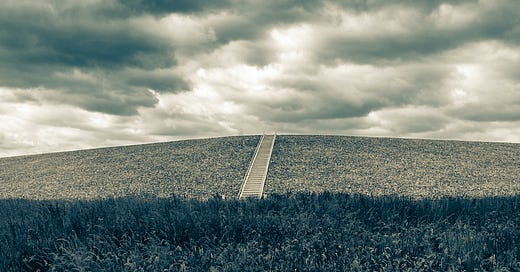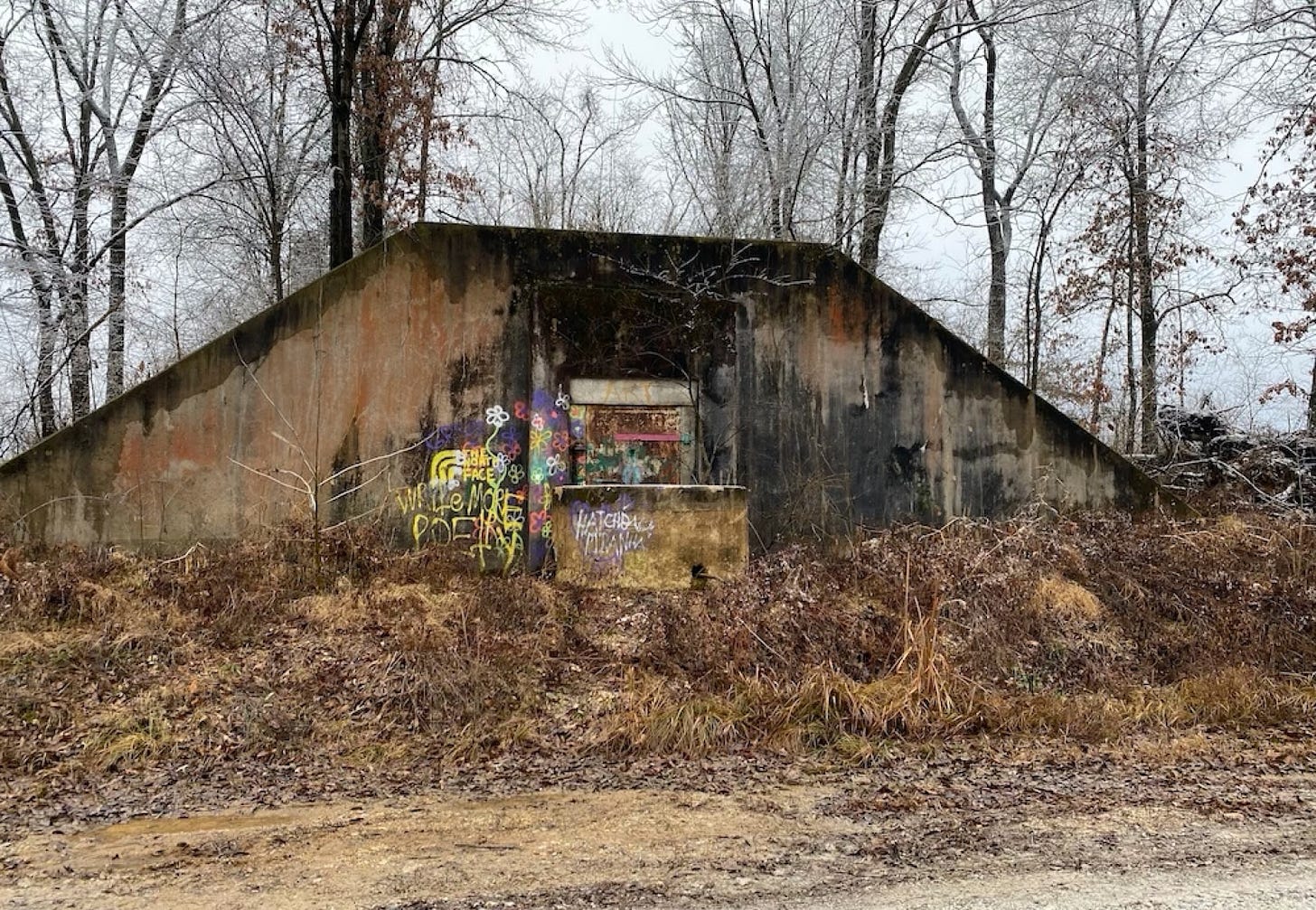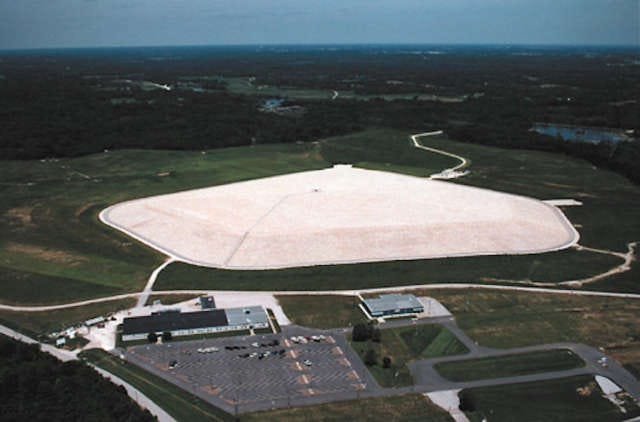Turning radioactive waste into a tourist attraction
Uranium processing and cleanup in Weldon Spring, MO (Part two of Radioactive St. Louis)
Welcome to another edition of Unseen St. Louis. In part two of my series ‘Radioactive St. Louis,’ we’ll examine the uranium processing in Weldon Spring, Missouri, a town just across the Missouri River from St. Louis and considered part of the metro area. In part one of the series, we looked at how the Manhattan Project came to St. Louis and how uranium was purified. This time, the story is less about the processing and more about the cleanup of a massive radioactive site.
Where is Weldon Spring?
Weldon Spring is located approximately 35 miles from downtown St. Louis, in St. Charles County. The town was first founded in 1864. As of 2010 had a population of 5,443, with residents largely white and moderately affluent.
In 1941 the US Army purchased 17,000 acres near the town in order to build the Weldon Spring Ordnance Works, the largest explosives production site in the country. The site produced TNT and DNT for the Allied forces in World War II. This site closed on August 15, 1945, immediately after the war. Workers used 7000 acres of the property to dispose of waste contaminated by uranium and radium from the Mallinckrodt facility in St. Louis. Then in 1947, Alice Busch, the wife of August Anheuser Busch, Sr., donated $70,000 to go towards the purchase of the area. It was remediated and turned into August A. Busch Memorial Conservation Area.
In 1955 the US Atomic Energy Commission made plans to construct a new uranium ore processing plant on part of this property. And it’s this processing plant, as well as a quarry used to dump wastes, that is the subject of the rest of this article.
The ‘Clean One’
In my previous article, I discussed how Mallinckrodt Chemical Works, based in St. Louis, gained the contract with the US Government to refine uranium used in the Manhattan Project.
After decontamination done by the Army, 205 acres of the former Ordnance Works property were transferred to the US Atomic Energy Commission for the new uranium plant in Weldon Spring. In 1957 the AEC opened the new factory operated by Mallinckrodt. Mallinckrodt subsequently closed its uranium plant on Destrehan in St. Louis City, laying off 180 employees.
Workers at the time referred to the Destrehan plant as ‘the Dirty One’ because it had become so contaminated by uranium dust and other chemicals. This meant that the new facility at Weldon Springs became known as ‘the Clean One.’ Little did they know how ironic the name would become.
But for those who went to work at the Weldon Spring plant, it must have felt like they had won the lottery. The AEC proclaimed how the new facility was state-of-the-art, and everyone had done what they could to improve conditions. In fact, a quarter of the money spent building the facility went into safety measures to protect workers. Among other things, workers would no longer have to handle uranium directly.
And the new plant was successful beyond anyone’s dreams. Although it was designed to produce 5000 tons of uranium annually, for most of its operation the plant actually processed 16,000 tons a year.
How ‘clean’ was it, really?
Although the AEC claimed the new facility was much safer, reports suggest otherwise. As the St. Louis Post-Dispatch recounted in a series of articles back in 1989, employees told a much different story.
In one instance, retired workers talked about how they would capture rain from the rooftops, funneling it back inside to reclaim the uranium dust that had escaped.
Meanwhile, outside of the plants were four pits holding ‘raffinate,’ also known as uranium waste. One of these retirees, Robert J. Toomey, described strange-looking frogs that appeared on the banks of the raffinate pits. They had unusual bumps on them, and Toomey said, “we didn't know if it was from the acid or what."
Despite uranium dust blowing everywhere, and even an occasional accident with storage containers and the like (one employee remembered a drum containing uranium ore opening up and spilling on him), workers were not that concerned about radiation. Retired employee Richard F. Schroeder noted that "it's all invisible, right? You don't know what it's doing."
Instead, the workers feared accidents involving sulphuric, hydrofluoric, and nitric acids used at the plant. Some experienced nasty burns or other injuries that were difficult to treat.
Factory closes
Late in the summer of 1966, Mallinckrodt officials told their workers that their contract with the Atomic Energy Commission had been moved to National Lead Co. in Fernald, Ohio, and the Weldon Spring plant would be closing. As it turned out, the demand for uranium had diminished by the 1960s.
On December 31, 1967, the AEC returned the facility to the Army, which planned to use the factory to produce Agent Orange. To prep the facility for the new project, the Army tried to do a cleanup of the uranium processing plant and the waste pits. They shipped dozens of railcars full of equipment to a company in Tennessee planning to decontaminate and reuse some of it.
The Army also dumped 900 truckloads of contaminated material into an old quarry. This site, four miles south of the plant, already contained rubble from the Army's manufacture of TNT and DNT, as well as tons of contaminated refuse from Mallinckrodt's old plant on Destrehan. The material dumped in the quarry included thousands of drums of highly radioactive thorium and uranium.
However, the Agent Orange project was canceled because of the extent of contamination, and in a giant game of hot potato, the Army transferred 50.65 acres of land back to the AEC, but held on to the Chemical Plant. The AEC maintained the property from 1968 through 1985, overseeing site security, the fencing, and keeping the grass mowed. Other than that, nothing new happened at the site for almost 20 years.
For a while, the unused plant was considered for reuse as classroom space for Francis Howell High School and the University of Missouri. State officials also looked into putting a prison there. All of these plans were scrapped when the extent of the contamination became known.
1980s cleanup
Why was the site finally cleaned up? It was all about politics. In 1984 Walter Mondale, the Democratic candidate for president, was attacking Ronald Reagan's environmental track record, and was giving speeches at toxic waste sites. Four days before Mondale was scheduled to visit Weldon Spring, Reagan announced a major cleanup of the site.
Starting that year, the Army repaired some of the buildings and decontaminated some of the walls, floors and ceilings. This included spraying thick orange polyurethane foam on especially radioactive equipment.
Then in 1985, the Army transferred the site to the Department of Energy.
The cleanup began in 1986, and the DOE had its work cut out for it, because there were no inventories or other records of what was in and around the facility. Their workers discovered 100 lbs of pure uranium metal scattered around, as well as a literal ton of thorium in one of the buildings. In the waste pits surrounding the factory, there were an estimated 214 tons of uranium and 129 tons of thorium. Water from broken water lines had carried all of this radioactive material into the August A. Busch Memorial Wildlife Area, where at least three lakes were contaminated, and the waste pits leaked at least 100 feet into groundwater. They also discovered carcinogenic nitrates from the ordnance work.
There were also 4000 barrels filled with asbestos, PCBs, trichloroethylene, and uranium waste, as well as other containers with unknown chemicals. In 1989 the Post-Dispatch described how the site was “so contaminated that federal officials require visitors to check in with a guard and, for the most part, stay in federal vehicles while at the site. No one is allowed to walk in certain areas without latex rubber boots and protective clothing.”
In 1987 the Environmental Protection Agency listed the quarry as a Superfund site and then added the chemical plant and waste pits in 1988.
After assessing the site, the DOE decided, in consultation with the state and the Weldon Spring Citizens Commission (a local watchdog group), to tear down the 44 buildings that made up the chemical plant. Due to the proximity of Francis Howell High School, they had to clean out the buildings before demolition to avoid spreading radioactive dust across the area and contaminating the school.
The quarry
A limestone quarry to the southwest of the actual processing facility was also part of the cleanup. In the 1940s, the limestone was mined to build the Ordnance Works, and the Army disposed of explosives wastes here. From 1960 on, the AEC used it to dispose of waste from the Weldon Spring chemical plant, dumping uranium- and radium-contaminated soil and equipment there.
None of this was known to the public. From the 1960s through the 1980s, until it was brought in as part of a federal cleanup, it was just another manufacturing plant. Teenagers even went swimming in the quarry, breaking through a chainlink fence to reach it.
When the DOE went to clean up the quarry in the 1980s, they found 120,000 cubic yards of contaminated materials, including soil, building material, metal, rock, and more, all swirling around in three million gallons of contaminated water.
And the water was leaking from the limestone and inching towards the wells a quarter-mile away that supplied water to 60,000 residents in St. Charles County.
The plan was to treat the contaminated water and then release it into the nearby Missouri River, but not everyone agreed with that idea. Long-time nuclear researcher and environmental activist Kay Drey told the Riverfront Times in 1999 what she thought about the quarry cleanup. She argued that the water should be stored in tanks until they could ensure it was safe before dumping it into the river just nine miles upstream from where St. Louis got its water supply. As she noted, she had “no confidence in the system. There were, and still are, a lot of unanswered questions," she said.
What do you do with tons of really nasty stuff?
It took some time, but eventually the engineers came up with a plan to neutralize the waste.
Rather than haul it elsewhere, which came with the risk of spills and further contamination, they decided to put everything—the sludge, the dust, the buildings, and all of the waste in the quarry—into a giant containment cell on the property.
They built the cell on top of 20 feet of natural clay, to which they tamped down 128,000 cubic yards of additional clay. Then the surface was lined with a high-density polyethylene membrane and a ‘geonet’ made up of natural and synthetic materials, then there was a layer of compost and peat moss, and another liner. The radioactive waste was placed in the center, surrounded by all of these materials, with the liquid waste first turned into a solid so it wouldn’t leach out. On top of everything else was a covering of rock sized for minimal deterioration.
Marjorie Wesely, the engineering manager at Weldon Spring for MK-Ferguson, told the Riverfront Times that "this containment is the best that we know how to do.” She added, “we've designed it to last for 1,000 years.”
And Steve McCracken, a civil engineer with the DOE, insisted that “there's nothing there to hurt you.”
What is there now?
Rather than hide the containment cell away from the public, they decided to make it an attraction. As McCracken put it, “a fence would just scare people for no reason at all. Why not make it an attraction rather than something scary?”
And now, a couple of decades later, the government says the Weldon Spring site is safe. You can walk up to the top of the containment mound. You can hunt, fish, and hike at the nearby Busch Conservation Area. You can visit an Interpretive Center that tell the story of the site. Around the site and the quarry, there are yellow poles that mark the location of monitoring wells to trace how much toxic material is moving around. One of the roads used to haul materials has been turned into the Hamburg Trail, a hike and bike trail connecting the site to the Missouri Department of Conservation public lands, the Great Rivers Greenway trail network, and Katy Trail State Park. According to the Interpretive Center’s website, there are hiking trails where you can view wildflowers, and they offer classes for birdwatchers and others.
Just last month, in April 2022, the U.S. Department of Energy Office of Legacy Management dedicated a new Weldon Spring Site Interpretive Center, which has just opened to the public. (I haven’t been there yet but it’s on the list). For those eager to visit, I must warn you that the site notes that the steps to the top of the mound are temporarily closed for repair.
But is it all really as safe as officials say? It depends on who you ask, and how long you plan to stay. A short day trip should be fine, but buying a house in the area may come with some risks. Some of the current and former residents of the area think all of the incidents of cancer and other diseases are no coincidence, as does Drey. Their concerns are documented in a 2001 article in the Riverfront Times.
So if you go to check it out, you probably won’t glow in the dark afterward. Probably.
As always, thanks for reading. If you found this article interesting, please be sure to leave a comment below. And I’d love it if you’d share it with your friends. Doing so will help Unseen St. Louis reach a larger audience and encourage me to keep writing!
Sources:
Atomic Homefront (HBO documentary)
The First Secret City documentary and timeline
The Safe Side of the Fence documentary
Kay Drey: Whistleblower for an Atomic Age in St. Louis, Environmental Echo (21 Oct 2021)
LM, Partners Welcome Community into New Weldon Spring Site Interpretive Center
Explore the Weldon Spring Site Interpretive Center
Weldon Spring Site, Just Moms STL
Fact Sheet, Weldon Spring Site, Missouri, US Department of Energy
7-part series “Legacy of the Bomb: St. Louis’ Nuclear Waste St. Louis Post Dispatch 12 Feb-19 Feb 1989.
When We Are History Riverfront Times 24 Feb 1999.
The Right to Answers Riverfront Times 7 March 2001.
Weldon Spring, Missouri (Wikipedia)













Lived in this area for years and my daughter graduated from Francis Howell high school. Been drinking the water from Weldon Springs for years. This article could explain my Renal Cell Carcinoma that now has metastasized from my left kidney (which has been removed), to my abdomen, liver, both lungs. I’m 70 now but wish I had know this sooner as we never have built a home in this area. Perhaps I need to call Josh Hawley!!
This is local History at its best. Invaluable! Wish I'd had it for the St. Louis chapter in my book "The First Moderns" (U. Chicago, 1997). -Bill Everdell